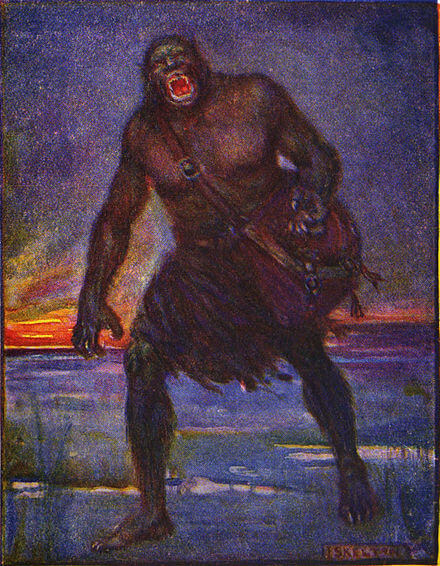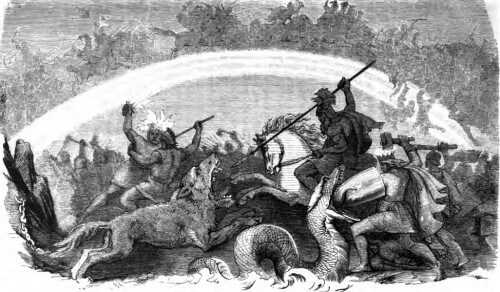Myths, with their enigmatic allure, have fascinated cultures across the ages. These captivating tales possess an inherent grandeur that never fails to enthrall. But what exactly is a myth? Is it simply a story that has been passed down over the years, or does it hold deeper meaning and significance?
Myth Meaning and Definition
First, let’s define myth
There is no universally accepted definition of what constitutes a myth. However, most scholars agree that myths are traditional stories that serve to explain the world around us and our place in it.
MYTH DEFINITION
What is a myth?
A myth, in essence, is a traditional story often riddled with supernatural elements, serving a dual role as both entertainment and a conveyance of social ideals or religious beliefs. Myths typically feature gods, demigods, heroes, and other fantastical creatures engaging in activities that shape the world and its customs as we know them. They often depict the creation of the universe, natural phenomena, or the ideals of conduct within a society. While myths are historically linked to ancient civilizations, they are intrinsic to all cultures, molding our collective understanding of the human experience throughout the ages.
What is a Myth Important For?
- Cultural Identity Marker
- Historical Events Record
- Moral Lessons Source
- Explaining Natural Phenomena
History of Myths
Origins of Myths
Let's take a step back in time, where early humans gather around a crackling fire, the dancing flames casting mysterious shadows upon their faces. In the depths of their curiosity, they seek understanding of the world that surrounds them — the rising and setting of the sun, the ever-changing seasons, and the origins of their existence. To unravel these enigmas, they create stories that some believe to be the genesis of myths.
In these early societies, myths served a vital role. They were more than just stories; they were a way of understanding the world. They explained natural phenomena, taught moral lessons, and gave order to the chaos of existence. Imagine trying to comprehend the world without the scientific knowledge we have today. There was a need for some sort of framework. That's what myths provide.
This video by Crash Course brilliantly breaks down the history and the origins of mythology.
What Is Myth • Crash Course World Mythology
But here's the fascinating part: as societies evolved, so did their myths. When agriculture emerged, for instance, myths about gods of harvest and fertility became popular. As societies became more complex, so did the narratives. Gods took on human characteristics, heroes embarked on epic quests, and the line between the mortal and divine blurred.
It's an ongoing evolution. Today's pop culture is ripe with myths of a different kind. Think about it — our superheroes, our movies, our literature, they're all modern-day myths, shaping our understanding of the world just as the ancient myths did.
What is a Myth Composed Of?
Characteristics of Myths
Myths, despite their diverse origins and the varying cultures they represent, share certain universal characteristics. These commonalities, while not found in every myth, form a general pattern that serves to deepen our understanding of these rich narrative constructs. Here, we will delve into some prevalent characteristics of myths, including their symbolic nature, the presence of supernatural elements, the role of heroes, and their didactic purpose.
Supernatural Elements
The presence of supernatural elements is a defining characteristic of many myths. Gods, demigods, monstrous creatures, and other fantastical beings often populate these stories, performing feats beyond human capabilities. These elements not only add intrigue and excitement but also serve to underscore the myth's underlying themes and messages.

1908 illustration by J. R. Skelton • Grendel from the epic of Beowulf.
Symbolic Nature
Myths are inherently symbolic, often using metaphorical language and imagery to convey profound truths. This symbolism can represent concepts such as life, death, love, or struggle, enabling the myth to transcend the boundaries of time and resonate with audiences of various eras.
Role of Heroes
Heroes play central roles in myths, often undertaking epic journeys or significant tasks. These heroes — sometimes part human and part divine — embody desirable characteristics such as bravery, wisdom, or resilience, acting as role models for their society. They often evolve through the structure of the hero’s journey.
Didactic Purpose
Beyond their entertainment value, myths typically serve a didactic purpose. They embody the values, morals, and social norms of a culture, acting as instructive tales that guide behavior and belief within a society. Through these stories, individuals gain a deeper understanding of their place in the world and the expectations of their society.
Myth Examples
Examples of Myths
Let's journey around the world, stopping briefly in various cultures to dig into their rich mythological tales. We'll explore not just the stories themselves, but also delve a bit deeper, examining their origins, themes, and cultural impact.
Greek Mythology: The Tale of Icarus
We begin in ancient Greece, with the tale of Icarus. You might recall this as the story of a young man who dared to fly too close to the sun. Armed with wings made of wax, Icarus ignored his father's warnings, soared too high, and met a tragic end when his wings melted.
The Myth of Icarus and Daedalus • Amy Adkins
The origins of this myth are steeped in the Greek ethos of temperance and moderation. It serves as a cautionary tale against hubris and excessive ambition. Even today, "the flight of Icarus" is a metaphor often used to describe overreaching that leads to a downfall.
Norse Mythology: Ragnarok
Next, we venture into the frosty realms of Norse mythology. Here, we encounter the tale of Ragnarok, a cataclysmic event marked by epic battles, natural disasters, and the eventual submersion of the world in water.

Friedrich Wilhelm Heine's 1882 masterpiece • "Battle of the Doomed Gods".
Ragnarok, with its themes of destruction and renewal, reflects the harsh realities of life in the Nordic regions. It's a stark portrayal of the cyclical nature of existence — an end leading to a new beginning. This myth has left a lasting impact on modern pop culture, particularly in fantasy literature and cinema.
Native American Mythology: Spider Woman
Our final stop is in the diverse cultures of Native America. Let's focus on the story of Spider Woman, a revered figure in Navajo mythology. According to the myth, Spider Woman taught the Navajo people the intricate art of weaving.
This myth underscores the value of craftsmanship and skill, both integral to Navajo culture. The Spider Woman is often invoked as a symbol of creativity and wisdom. Her influence can be seen in the continued importance of weaving in Navajo society.
As you can see from these examples, myths are more than just stories. Their enduring presence in our shared human consciousness reveals their continued relevance and impact, even in the fast-paced modern world. Their importance encompassing art, philosophy, and spirituality makes myths an integral part of our collective identity.
Up Next
What is an Allegory?
Having explored the depth and breadth of myths, their characteristics, and examples from various cultures, we now turn to another form of storytelling that's just as rich and impactful — the allegory.
